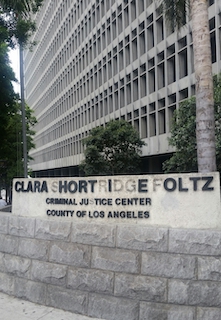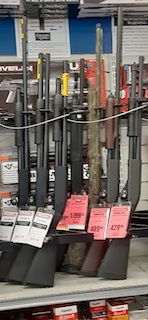If the child causes death or great bodily injury to the child or any other person, the owner of the weapon is considered to have committed “criminal storage of a firearm in the first degree.” This crime is a “wobbler,” meaning it can be punished as a felony or a misdemeanor.
If prosecuted as a felony, the client faces a minimum term or sixteen months in state prison, a mid-term or two years in state prison, or a maximum term of three years in state prison. If prosecuted as a felony, the client also faces a fine of up to $10,000.
If prosecuted as a misdemeanor, the client faces up to a year in county jail and a fine up to $1,000, plus penalties and assessments. Probation is possible for either a felony or a misdemeanor, depending upon the facts of the case and the client’s criminal history.
It is considered “second degree criminal storage of a firearm” if the child, upon gaining access to the firearm, commits an injury other than great bodily injury to himself or herself or takes the firearm to a public place or violates Penal Code § 417. This crime is brought as a misdemeanor, with the client facing up to a year in county jail and a fine of up to $1,000, plus penalties and assessments. Probation would be likely if this is the client’s first offense.
 CCB
CCB
A person commits the crime of “criminal storage of a firearm in the third degree” under Penal Code § 25100(c) if the person keeps any loaded firearm within any premises that are under the person’s custody or control and negligently stores or leaves a loaded firearm in a location where the person knows, or reasonably should know, that a child is likely to gain access to the firearm without the permission of the child’s parent or legal guardian, unless reasonable action is taken by the person to secure the firearm against access by the child.
We have seen criminal storage of a firearm in the third degree alleged in the course of police searching a home for weapons because police discovery or are advised that our client is a registered owner of a firearm and alleged to have committed domestic violence. Police will search the home and find a firearm in an unlocked safe or even just laying under a bed or on the top shelf of a closet, for example. Criminal storage of a firearm in the third degree is a misdemeanor.
Under Penal Code § 25105, there are seven defenses:
Section 25105 states that section 25100 does not apply whenever any of the following occurs:
(a) The child obtains the firearm as a result of an illegal entry to any premises by any person;
(b) The firearm is kept in a locked container or in a location that a reasonable person would believe to be secure;
(c) The firearm is carried on the person or within close enough proximity thereto that the individual can readily retrieve and use the firearm as if carried on the person;
(d) The firearm is locked with a locking device, as defined in Section 16860, which has rendered the firearm inoperable;
(e) The person is a peace officer or a member of the Armed Forces or the National Guard and the child obtains the firearm during, or incidental to, the performance of the person’s duties;
(f) The child obtains, or obtains and discharges, the firearm in a lawful act of self-defense or defense of another person; or
(g) The person who keeps a loaded firearm on premises that are under the person’s custody or control has no reasonable expectation, based on objective facts and circumstances, that a child is likely to be present on the premises.
To address this charge before the arraignment, to seek leniency in punishment, we suggest that the client take a weapons safety course online (such as is offered through Turner’s Outdoorsman).
For more information about other firearm issues, please click on the following articles:
 Gun Sale
Gun Sale CCB
CCB